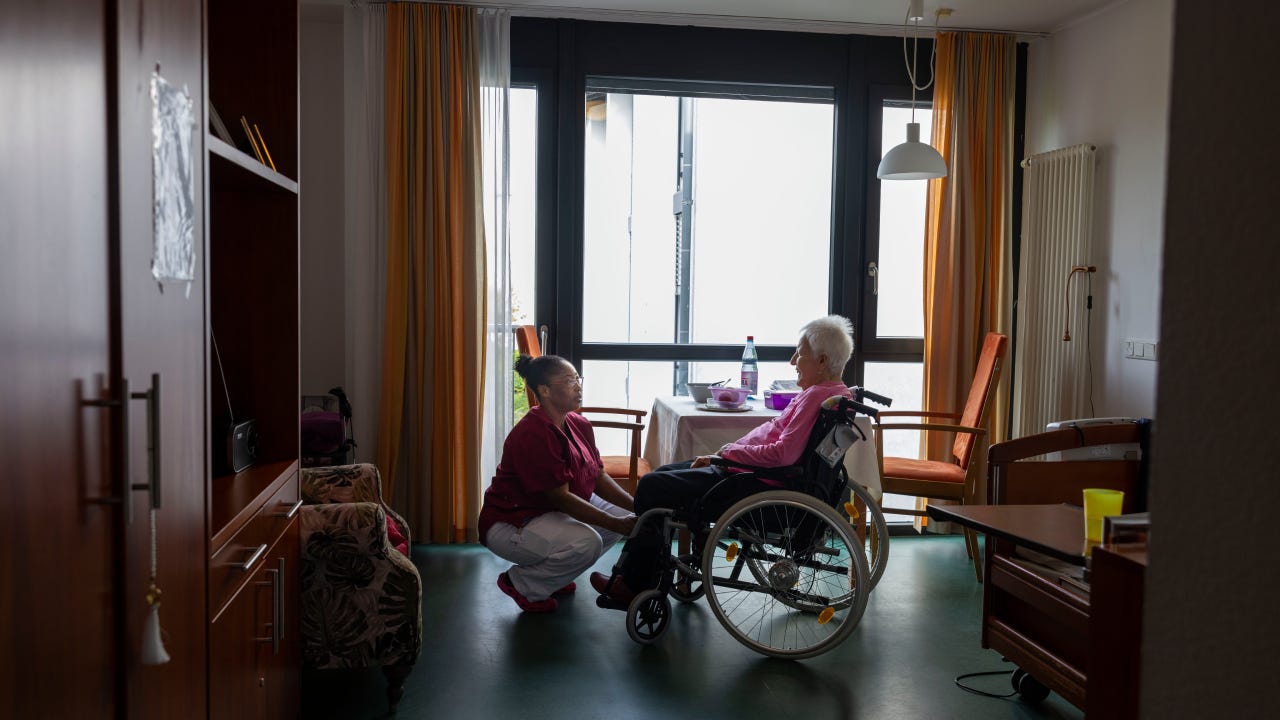What is a conservatorship?

The Bankrate promise
At Bankrate we strive to help you make smarter financial decisions. While we adhere to strict , this post may contain references to products from our partners. Here's an explanation for .
Our writers and editors used an in-house natural language generation platform to assist with portions of this article, allowing them to focus on adding information that is uniquely helpful. The article was reviewed, fact-checked and edited by our editorial staff prior to publication.
Not many Americans had conservatorships on their radar until Britney Spears’ highly publicized battle with her father. A conservatorship is a legal arrangement that grants a guardian the authority to manage the affairs of an individual, or conservatee, who may have physical or mental limitations. The arrangement is supposed to ensure that the conservatee’s financial and personal needs are met, while also protecting them from financial abuse.
While a conservatorship should support the welfare of an individual who is unable to care for themselves, it can also limit their autonomy and result in the public disclosure of their assets.
If you are considering a conservatorship for yourself or a loved one, you’ll need to understand the legal implications and responsibilities first. This guide provides an overview of the process and helps you understand how it works.
Key takeaways
- Conservatorships are generally considered an extreme option and require significant legal involvement.
- Alternatives to conservatorships include durable power of attorney (financial and/or medical), revocable living trusts and health care proxies.
- The conservatorship process varies by jurisdiction and state. Consult a local lawyer for applicable information.
How does a conservatorship work?
A conservatorship is established through a court order and gives the conservator, or guardian the authority to make decisions on behalf of the conservatee. This could involve managing the conservatee’s financial matters, personal care or both. Generally, a judge only appoints a conservator when it’s necessary to ensure the person’s well-being. The conservator’s primary responsibility is to act in the best interest of the conservatee, providing for their care.
When is a conservatorship needed?
A conservatorship is necessary when an individual is unable to make decisions regarding personal matters, healthcare, finances, or living situation due to a disability, injury or illness (mental or physical). The key question to consider is whether the individual can make decisions about their own money and living situation. The court will also assess the individual’s legal competence before granting a conservatorship.
What is the role of a conservator?
The conservator’s role is multi-faceted and can include managing the conservatee’s financial affairs, overseeing their personal care and ensuring their well-being. Conservators do not have free rein to make any decision they see fit. They must always act with the conservatee’s best interests in mind.
In terms of personal care, this may involve arranging for medical care, deciding where the conservatee will live, ensuring they have proper food, clothing and other essentials, and even making life-changing medical decisions. In financial matters, the conservator is responsible for managing the conservatee’s money, making sound investments and preventing financial abuse or neglect.
The conservator must maintain careful record-keeping, which could include conducting an initial inventory and appraisal, and undergoing an annual accounting audit.
Different types of conservatorships
There are several types of conservatorships designed to meet the varying needs of different conservatees.
- Limited conservatorship
- The conservator only has the powers necessitated by the conservatee’s limitations. A limited conservatorship is often used for higher-functioning adults such as individuals with developmental disabilities. The key difference lies in the extent of the conservator’s powers and the conservatee’s needs. While a general conservatorship provides broad powers, a limited conservatorship only grants the authority necessary based on the conservatee’s specific limitations.
- Temporary conservatorship
- This kind of conservatorship is appointed when an urgent situation exists that may result in harm to the conservatee. A temporary conservatorship is often filed and granted while waiting for a full conservatorship, which can take months.
- General, full or plenary conservatorship
- In this arrangement, a conservator has nearly total control over the conservatee’s affairs. As this is the most extreme form of conservatorship, the judge granting the arrangement must see significant evidence that it is necessary. It’s often used for elderly individuals or those who have been severely impaired.
What is the difference between a conservatorship of the person and a conservatorship of the estate?
A conservator of the person is responsible for personal and/or medical decisions, while a conservator of the estate handles financial matters. The former is typically used for individuals needing assistance with everyday life and personal welfare, while the latter oversees financial decisions, such as managing assets and making investment decisions. The same person can serve in both capacities.
Conservatorship vs. guardianship
The primary difference is that guardianships are commonly associated with legal responsibility for a minor, whereas conservatorships usually pertain to adults who are unable to handle their own matters due to mental or physical restrictions.
In several states, a guardianship grants someone the power to make personal and daily decisions on behalf of another individual, while a conservatorship allows for control over someone’s financial decisions.
Conservatorship vs. power of attorney
A conservatorship and a power of attorney both involve one individual making decisions on behalf of another. However, the key difference lies in how they are established. A power of attorney is voluntarily given by an individual to another, allowing them to make certain decisions on their behalf. Conversely, a conservatorship is appointed by a court, often against the wishes of the conservatee. Notably, a conservatorship is usually more costly and involves greater court oversight than a power of attorney.
Establishing a conservatorship
Establishing a conservatorship generally involves several legal steps. Keep in mind that these steps vary by state and jurisdiction:
- To begin, a petition for conservatorship must be filed in the probate court of the county where the respondent, or potential conservatee resides. The court then appoints an investigator and, possibly, counsel for the potential conservatee. A hearing date is set.
- Before the hearing, the investigator interviews people, reviews records and makes recommendations based on the evaluation of the respondent. Information is compiled and filed for the hearing.
- At the hearing, the court examines all the facts and listens to witness testimonies to decide whether a conservatorship is necessary or appropriate. The court decides whether the respondent is incapacitated, and if so, what type of conservatorship is appropriate. If a conservatorship is granted, a conservator/guardian is appointed.
Alternatives to conservatorships
Power of attorney (POA): A durable power of attorney is a legal document that grants someone the authority to make financial and/or healthcare decisions on behalf of another person. It allows individuals to choose someone they trust to act as their agent and make decisions for them when they are unable to do so themselves.
Advance health care directive: Also known as a living will or health care proxy, an advance health care directive allows individuals to specify their healthcare preferences and appoint someone to make medical decisions on their behalf if they become incapacitated or unable to communicate their wishes.
Trusts: A revocable living trust can help provide a structured arrangement for managing assets and ensuring their proper use for the benefit of the individual. Trusts can be designed to provide financial management and protection, while also allowing for flexibility and specific instructions to be followed.
Advantages and disadvantages of a conservatorship
Advantages
- Provides protection and oversight. When a conservatorship is appropriate, it can positively impact a conservatee’s life by providing a conservator who looks out for their best interests.
- Under legal purview. Conservatorships typically require court monitoring, which may include periodic reporting, plan submission and other document reviews that can help keep the conservator in line.
Disadvantages
- Loss of individual rights. The conservatee loses independence and becomes a ward of the conservator. This is a major disadvantage for an individual who may regain the ability to care for themselves.
- Difficult to set up or overturn and potentially costly. The legal legwork involved, plus the time it takes for a hearing, are all factors to consider.
- Private matters can become public. Records of the court proceedings may be accessible to the public, resulting in the disclosure of the conservatee’s assets, among other private and personal information.
Bottom line
Although a conservatorship can provide necessary protection and care for someone unable to manage their own affairs, it significantly impacts the conservatee’s autonomy. Before starting the legal proceedings for a conservatorship, consider all the available options — such as power of attorney or a revocable living trust.
Related Articles




What are commission-free annuities and are they good for retirement?